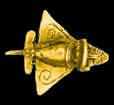'Nano Man' the nanotechnology scientist discovered by Jeremy Corbell were both on Coast to Coast last night
http://www.coasttocoastam.com/show/2016/01/24
From the C2C page...
In the first hour, George Knapp welcomed filmmaker Jeremy Corbell, who is currently working on a project about a scientist he called "Nano Man." He was introduced to this person through a mutual contact in the U.S. Navy. Corbell described meeting in an atmosphere of paranoia, since "Nano Man"'s employers thought that Corbell was a government intelligence operative who wanted to steal ideas and technology. He advised that when dealing with people who work on sensitive projects, that "confidence has to be continuously earned" and that you must be able to keep secrets and release any information that is given to you in a timely fashion.
In the second hour, "Nano Man" was revealed to be physicist Chris H Cooper. For many years, Cooper has worked in the development of carbon nanotubes, which are composed of carbon molecules ten atoms thick, and that he twists into strings and cables that exhibit incredible strength. Another application for the nanotubes which Cooper has patented is a water purification system that was funded by a grant from the Air Force's Wright-Patterson Base in order to provide clean water for military personnel. Cooper says that it has also been used in developing countries in Africa as "a high-tech product in a low-tech environment."
Cooper says that what we know of physics at this time is "like comparing a drop of water to the ocean." He recalled that during the 1980s, discoveries were made that had direct bearing on the development of cold fusion, which Cooper has been studying for many years. In 2014 he says his research team produced a thermal output from a brass sphere filled with palladium and deuterium, which was converted into electricity that lighted an LED output. The experiment was captured on film by Corbell, who played an audio clip of the moment when this occurred, and said that Cooper's father (who has assisted in some of his projects) told him that the success of the experiment was "on par with the discovery of fire."
Cooper is also perfecting what he calls a "space drive." He described the principle of the quantum or zero-point field, which his drive uses as the medium to "push against" as aircraft use air or ships use water. He has demonstrated a working model to Corbell. The experiment was conducted in a private, underground laboratory and appeared to prove the concept, at least to the filmmaker's satisfaction. Using this drive, Cooper claims that spacecraft could reach Mars in two days and the nearest star in "a couple of months." Some of the materials for the drive were supplied by Bob Lazar, of area 51 fame.
Corbell also told the story of going to NASA's Ames Research Laboratory with a small vial of liquid that Cooper had given to him with what looked like metallic dust mixed in. When placed under an electron microscope, the "dust" appeared to be countless microminiature devices composed of "gears," "graspers," and other apparently machined artifacts. They called this substance "utility fog," a term coined in the 1990s, which refers to the theory of large groups of nanobots designed to perform a task at a molecular level. Cooper suggested that the material in the vial was collected in the aftermath of a UFO incident, and speculated that it may be the method used to produce crop circles, and recalled his own experience of standing in a crop circle while it was being formed. Corbell has four films planned that will feature the discoveries of Chris Cooper.
Jeremy Corbell's 'Nano Man' film
http://www.extraordinarybeliefs.com/#/i-am-nano-man/
There are going to be a series of these.
This is Chris Cooper's website
http://www.coopercoretechnologies.com/






 Reply With Quote
Reply With Quote


